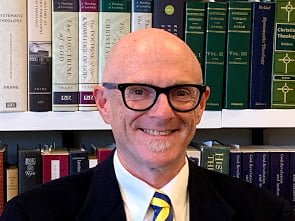⏱️ Estimated Reading Time: 4 min read
I first read He is There and He is Not Silent by Francis Schaeffer in 1992. Multiple readings have ensued, and I turn back to Schaeffer’s book again and again for help with apologetics. Readers will be pleased to see this new edition by Crossway Books with a revised cover in time to meet the current needs of our time.
Schaeffer argues for three basic areas of philosophical thought: metaphysics (being or existence), morals (the dilemma of man), and epistemology (the problem of knowing). Philosophy and religion are essentially devoted to the same questions, namely, metaphysics, morals, and epistemology.
Philosophy is concerned with either an academic subject or a person’s worldview. It is the later that Schaeffer is concerned with in this volume. Schaeffer contends that every man is a philosopher of sorts because it is impossible for humans to live without a worldview.
Metaphysics
There are three basic answers to the question of metaphysics. The first answer is that “everything that exists has come out of absolutely nothing.” Naturalism’s answer suggests no energy, no mass, no motion, and no personality. This answer is, as Schaeffer calls it, “nothing, nothing.”
The second answer is that everything had an impersonal beginning. This answer leads automatically to reductionism. “Beginning with the impersonal must be explained in terms of the impersonal plus time plus chance,” writes Schaeffer. This answer poses many problems. But the two primary problems fail to answer the major philosophical question: the need for unity and the need for diversity.
The third answer is the biblical answer. The third answer is the only rational and satisfying answer. This answer suggests that we must begin with a personal beginning. And to have an adequate answer of a personal beginning, one must have a personal infinite God, and personal unity and diversity in God (found the holy Trinity).
Schaeffer concludes: “The reason we have the metaphysical answer is because the infinite-personal God, the full Trinitarian God is there and he is not silent.”
Morals
There are only two basic answers to the question of morals. The first: Everything had an impersonal beginning. The is the answer of atheism. Schaeffer never minces words. He writes, “Beginning with the impersonal, there is no explanation for the complexity of the universe or the personality of man.” When one begins with the impersonal, one eliminates the possibility of morals or ethics.
The second answer is the biblical reality of a personal beginning. Man was created by an infinite-personal God. Man sinned or “made a decision to change himself,” as Schaeffer notes.
“The starting point,” writes Schaeffer, “to the answer (of the question of morals) as with metaphysics is the fact that God is there and he is not silent.”
Epistemology
Schaeffer concludes by setting forth the problem concerning epistemology and the epistemological answer.
The epistemological problem concerns the tension between nature (particulars) and grace (universals). When nature becomes autonomous, the universal is lost with the hope of giving the particulars meaning. The problem is that when nature becomes autonomous, nature “eats up” grace. Schaeffer argues that when we are left with only particulars, we become lost in the areas of metaphysics, morality, and epistemology.
The epistemological answer was summarized by the Reformers. The Reformers did not allow for a dichotomy between nature and grace. The reason: they had verbal propositional revelation. The Reformers were vocal about the reality of God’s existence and the reality of his revelation. Schaeffer popularized this view in the title of his book, He is There, and He is Not Silent. God has spoken truly about himself. However, he has not spoken exhaustively about himself.
Schaeffer urges readers to come face to face with two gigantic presuppositions – “the uniformity of natural causes in a closed system and the uniformity of natural causes in an open system and in a limited time span.” Ultimately, readers must determine which worldview fits with the facts.
Schaeffer summarizes, then, the basic presuppositions in historic Christianity.
- God is there.
- God is the infinite-personal God who has made man in his image.
- God made man a verbalizer in the area of propositions in his horizontal communications with other men.
- God communicates to us on the basis of propositions, viz, he is there, and he is not silent.
Schaeffer maintains, “Under the unity of the apex of the infinite-personal God, in all of these areas we can have meaning, we can have reality, and we can have beauty.”
He is There, and He is Not Silent is an essential work of apologetics. It should be required reading for every Bible College/Seminary student. Schaeffer put his finger on the essential issues of the day – even in the early ’70s and especially in our day.




